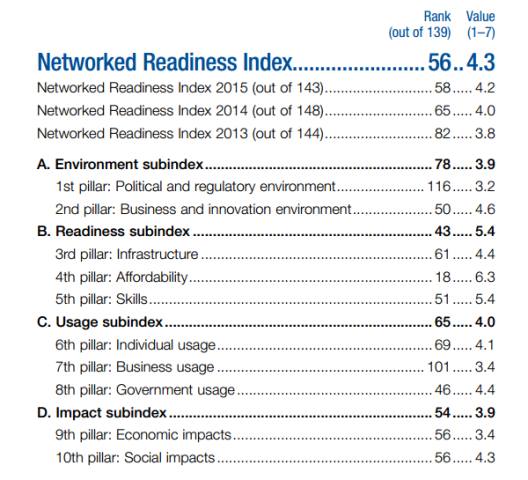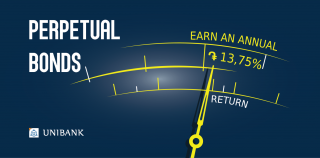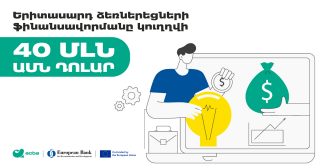
Armenia in the World of IT

From the day when the expression information technologies (IT) was introduced into our lexicon, it immediately became an inseparable part of speeches and programs of Armenia’s authorities.
We may already say, that it’s being mentioned from unknown times, that IT is one of the leading directions of our economy. That is, we’re not rich in natural resources, we face transportation and other issues, and we just need to rely only on our brains, on mental abilities and knowledge. Former Prime Minister Tigran Sargsyan even introduced a new word in our lexicon—knowledge-based economy.
However, what did we do besides speaking? How much did we develop the field of IT and which conditions did we create for its further development? In which condition are we as compared to our neighbors?
Those responsible for the economic bloc, surely, are convinced, that we record success, that the field is developing. They’re even convinced in positive condition of IT, that burden of the budget or other extra payments are added exactly on account of specialists of this field (mandatory accumulative pension system, increase of income tax upon draft bill on Tax Code and etc.).
What is the most ridiculous, one may say we don’t properly know the scale and the degree of development of IT. Currently one of the most important indices of economy assessment became investment of IT in GDP. We only have approximate assessments.
However, there are other international assessments and reports, which allow understanding in which condition is the field of IT, what issues it faces and in which position it is, as compared to other states.
One of the most authoritative reports is Networked Readiness Index or simply technological readiness index, which is a part of Global Information Technology Report. The index is issued by World Economic Forum, in partnership with INSEAD business school.
It allows to understand the position the country holds in the “digital world” and how competitive it’s in the field of IT. Assessment is implemented on the basis of 4 main sub-indices: environment existent for ICT (regulations, infrastructures and etc.), level of readiness of individuals, organizations to use information technologies, and actual level of making use of IT by beneficiaries, as well as the influence. Besides, each subindex has different pillars (total number of which is 10), which are separately assessed.
Annual report 2016 was released these days. It’s worth stating, that among 139 countries, Armenia is on the 56th with 4.3 points. As compared to the report for 2015, our country has recorded progress by 2 horizons.
However, it’s more interesting to see as a result, or due to which did we appear on the 56th place and in which directions do we progress and where do we have issues?

As we may see, the situation is even more upsetting regarding environment subindex, by which Armenia hold the 78th place. In case of more in-depth analysis, the pillar referring political and regulatory environment spoils the snapshot (116th place). And in case of more opening of its brackets it turns out, that regarding independence of the judicial system, we are ranked the 106th, the 115th regarding productivity of judicial system, the 134th regarding processes needed for implementation of contracts (this speaks of bureaucracy).
Regarding business and innovation environment the snapshot is more beneficial—we’re on the 50th place. However, here pillars are available as well, regarding which we’re holding rather unfavorable positions. For instance, we’re ranked the 115th in the quality of management of schools.
We won’t reflect to all indices separately. There are indices, regarding which we’re among world leaders. For instance, we’re the first regarding mobile coverage: we have 100% coverage. We’re ranked the first in competition in the field of mobile communications. We hold the 8th place in literacy of elder people (99.8% of population is literate). Regarding broadband internet we’re in favorable position as well—24th place.
However, contrary extremities are existent as well. We have the most upsetting indices regarding staff training (116th place), or “absorption” of high technologies by enterprises (113th place).
Those interested in the field may familiarize with the details in the report. However, general conclusion, which may be drawn, is that only speeches and programs with nice names mean nothing, that one of the most crucial factors preventing the development of IT are beyond economic platform (e.g. independence of judicial system).
At first glance it may seem that 56th place out of 139 countries isn’t a bad index. Moreover, when we have a noticeable progress in the period of recent years. As already stated, in 2015 in technological readiness index we were the 58th, prior to that, in 2014—the 65th (out of 148 countries), in 2013—the 82nd (out of 144 countries). Our neighbors in the list are Croatia, Panama, Mongolia and Georgia.
However, touching upon competition, everything should be observed in comparison, first and foremost, with neighboring countries. Georgia, for instance, is ranked the 58th. Moreover, as compared to previous years, it didn’t record progress like we did (in 2015 and 2014 it was the 60th, and in 2013—the 65th).
However, we yield Azerbaijan, which holds the 53rd place. In 2015 this country was the 57th, i.e. it progressed by 4 positions. However, in 2014 Azerbaijan was holding higher positions, holding the 49th place. This shows, that one shouldn’t underestimate this enemy and be calm thinking that this country, relying on petrodollars, doesn’t pay attention to high technologies.
Finally, it should be added, that the rating of technological readiness is headed by Singapore, which is followed by Finland, Sweden, Norway and the USA. Netherlands, Switzerland, United Kingdom, Luxemburg and Japan are in the top ten. The list of 139 countries is concluded by Haiti, Burundi and Chad.
By Babken Tunyan























